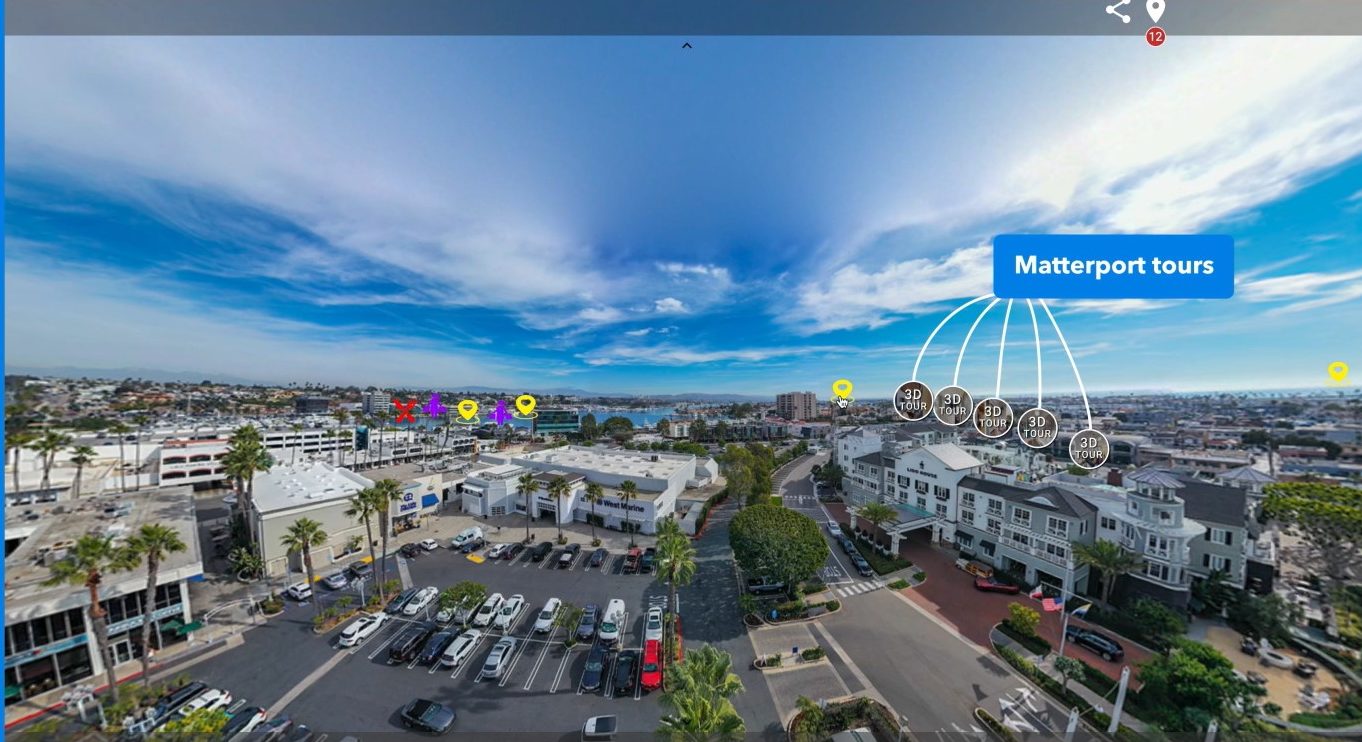software to stitch photos together
Software to Stitch Photos Together: A Complete Guide for Photographers and Real Estate Professionals
In today’s digital-first world, high-quality visuals are essential. This is particularly true for professionals in photography and real estate. One powerful tool that can elevate your visual content is photo stitching software.
Whether you are creating immersive 360-degree virtual tours or panoramic landscapes, the right software can seamlessly combine multiple images into one cohesive masterpiece. In this comprehensive guide, we’ll explore:
- What photo stitching software is
- How it works
- What features to look for
- Which tools are best suited for photographers and real estate agents using platforms like www.threesixty.tours
I. Introduction
In a world where people shop for homes online and explore places through virtual tours, visuals are everything. For real estate agents and photographers, standing out means offering more than just high-resolution images. It means creating immersive experiences. That’s where photo stitching software comes in.
Photo stitching software lets you combine multiple overlapping photos into one seamless panoramic or 360-degree image. This capability is especially useful for creating virtual tours on platforms like www.threesixty.tours. A smooth and interactive viewing experience can make or break a listing.
Whether you are capturing the sweeping view from a mountain peak or showcasing the layout of a luxury home, stitched images can dramatically improve your presentation. The best part is that the right tools can automate much of the process, saving you time and reducing errors.
In this guide, we’ll break down how photo stitching works, what features matter most, and which tools are worth your time. Whether you are a seasoned pro or just getting started, you’ll walk away with a clear understanding of how to use photo stitching software to boost your visual storytelling.
II. How Photo Stitching Software Works
To get great stitched images, you need to understand how the process works. It’s not just about snapping a bunch of pictures and hoping for the best. There’s a method behind the magic.
Step 1: Image Capture
The first step is capturing a series of overlapping images. Each shot should overlap the next by about 20–30%. This overlap gives the software enough visual information to align the images correctly.
- Use a tripod for stability and consistency.
- A panoramic head can help maintain the same pivot point, which reduces distortion.
- If you are using a smartphone or a 360-degree camera like the Ricoh Theta or Insta360, rotate the camera around its optical center.
- Lighting and exposure matter. Keep your settings consistent across all shots.
Step 2: Alignment and Overlap Detection
Once your images are uploaded, the software analyzes them to find matching features. This process is like putting together a puzzle—except the software does the matching for you.
It uses algorithms like SIFT (Scale-Invariant Feature Transform) and RANSAC (Random Sample Consensus) to detect patterns, edges, and textures. These help align the images accurately.
Some tools offer full automation, while others allow manual adjustments for more control. If you are working on a critical project, like a high-end real estate listing on www.threesixty.tours, manual tweaks can make a significant difference.
Step 3: Blending and Rendering
After alignment, the software blends the images into one cohesive photo. It adjusts colors, contrast, and exposure to ensure a smooth transition between images.
Advanced tools use techniques like multi-band blending and exposure fusion to handle tricky lighting situations. The result? A seamless image that looks like it was captured in a single shot.
Whether you are stitching a horizontal panorama or a full 360-degree image, this final step is where everything comes together. For virtual tours, a well-rendered image ensures a smooth, immersive experience for viewers.
III. Key Features to Look for in Photo Stitching Software
Not all photo stitching tools are created equal. Here are the features that truly matter when choosing the right software for your needs.
- Easy-to-Use Interface
You don’t need to be a tech wizard to use good stitching software. Look for a clean, intuitive interface with drag-and-drop functionality. This includes:
- Guided workflows
- Helpful tooltips
Real estate agents using www.threesixty.tours will appreciate software that lets them create virtual tours quickly, without a steep learning curve.
- File Format Support
If you’re a photographer, you probably work with RAW files to preserve image quality. Ensure your software supports formats like:
- JPEG
- PNG
- TIFF
- RAW
This flexibility ensures you won’t lose detail during the stitching process.
- Advanced Stitching Capabilities
Need to create a 360-degree image or a gigapixel panorama? Look for software that offers:
- Spherical stitching
- HDR support
- The ability to handle large files
For users of www.threesixty.tours, spherical stitching is a must. It allows you to create immersive, navigable virtual environments that feel lifelike and professional.
- Built-In Editing Tools
Basic editing features can save you a trip to a separate program. Look for tools that allow you to:
- Crop
- Adjust color
- Correct exposure
Some software even offers filters, overlays, and watermarking—great for branding your work.
- Export and Sharing Options
Once your image is stitched and polished, you’ll need to export it. Make sure the software allows:
- High-resolution exports
- Supports equirectangular projections if you’re creating 360-degree content
Bonus points for tools that integrate with cloud storage or offer direct upload to platforms like www.threesixty.tours. This can dramatically speed up your workflow.
- Batch Processing and Automation
If you’re working on multiple properties or projects, batch processing is a lifesaver. It lets you apply the same settings to multiple images, saving time and ensuring consistency.
Some tools even offer automation features like preset templates and auto-alignment. This is especially helpful for real estate professionals managing several listings at once.
- Performance and Compatibility
Make sure the software runs smoothly on your system. Some advanced tools require:
- A powerful computer with GPU acceleration
- Multi-threading support
Check compatibility with your operating system and hardware before purchasing. Slow processing times can derail your workflow and lead to frustration.
IV. Top Photo Stitching Software Options
With so many tools out there, how do you choose the right one? Here’s a breakdown of some of the best options, from beginner-friendly to professional-grade.
- Adobe Photoshop
Photoshop is a powerhouse for editing and includes a feature called Photomerge for stitching images. It delivers high-quality results and integrates well with other Adobe tools.
However, it’s not the easiest to learn if you’re new to photo editing. It’s also subscription-based, starting at $20.99/month.
Best for: Intermediate to advanced photographers who already use Adobe products.
- PTGui
PTGui is a top-tier choice for professionals. It’s fast, flexible, and supports HDR panoramas, batch processing, and spherical projections.
This software has a steeper learning curve but offers unmatched control. Pricing starts at $149 for the standard version and $299 for the pro version.
Best for: Professionals creating 360-degree images for virtual tours on platforms like www.threesixty.tours.
- Hugin
Hugin is a free, open-source tool that’s surprisingly powerful. It supports various file formats and offers both automatic and manual stitching.
The interface isn’t the most polished, but it’s a great starting point for beginners or those on a budget.
Best for: Beginners and hobbyists.
- Microsoft ICE (Image Composite Editor)
Another free option, ICE is user-friendly and delivers quality results. It’s great for casual users who want to create panoramas without diving into complex settings.
Although it lacks some advanced features, it works well for simple projects.
Best for: Beginners and real estate agents needing quick results.
- Autopano Giga (Discontinued but still used)
Though it’s no longer officially supported, Autopano Giga remains popular among professionals for its intuitive interface and powerful features.
It supports gigapixel stitching and batch workflows, making it ideal for large-scale projects.
Best for: Experienced users with access to legacy software.
Recommendations by User Level:
- Beginners: Microsoft ICE, Hugin
- Intermediate: Adobe Photoshop, PTGui Standard
- Professionals: PTGui Pro, Autopano Giga
If you’re using www.threesixty.tours, PTGui Pro is your best bet for creating high-quality, immersive 360-degree images. However, even free tools like Hugin can deliver great results with the right techniques.
V. Best Practices for Successful Photo Stitching
Even the best software can’t fix poorly taken photos. Follow these tips to get the best results every time.
- Overlap Images Properly
Always aim for 20–30% overlap between each photo. This provides the software enough data to find matching points and align the images accurately.
- Use Manual Settings
Set your camera to manual mode. This locks in exposure, white balance, and focus. Doing so helps avoid inconsistencies that can lead to visible seams.
- Keep Your Camera Level
Use a tripod with a leveling base or bubble level. A tilted camera can distort the horizon and make the final image look unnatural.
- Shoot in RAW
RAW files offer more flexibility during editing and blending. They are especially useful in challenging lighting conditions or when creating HDR images.
- Preprocess Before Stitching
Apply lens correction and noise reduction before stitching. This reduces distortion and helps the software align images more accurately.
- Watch for Common Issues
Common problems include ghosting, misalignment, and color mismatches. Use manual control points or blending tools to fix them.
- Review Before Exporting
Always preview your stitched image before saving. Zoom in to check for errors, and make adjustments as needed.
Following these steps ensures your stitched images are clean, professional, and ready to impress—especially when used in a virtual tour on www.threesixty.tours.
VI. Conclusion
Photo stitching software is more than just a technical tool—it’s a creative asset that can transform your visual content. Whether you are a real estate agent looking to build engaging virtual tours or a photographer capturing breathtaking landscapes, the right software makes all the difference.
We’ve covered how photo stitching works, what features to prioritize, and which tools are best for different skill levels. From free options like Hugin to professional-grade solutions like PTGui Pro, there’s something for everyone.
For users of www.threesixty.tours, high-quality stitched images are essential for creating immersive and interactive virtual tours. With the right tools and techniques, you can elevate your content, attract more viewers, and ultimately, close more deals.
Ready to get started? Explore the tools mentioned, try different techniques, and bring your vision to life. Your next great panorama—or virtual tour—is just a few clicks away.
Word Count: 2,059


